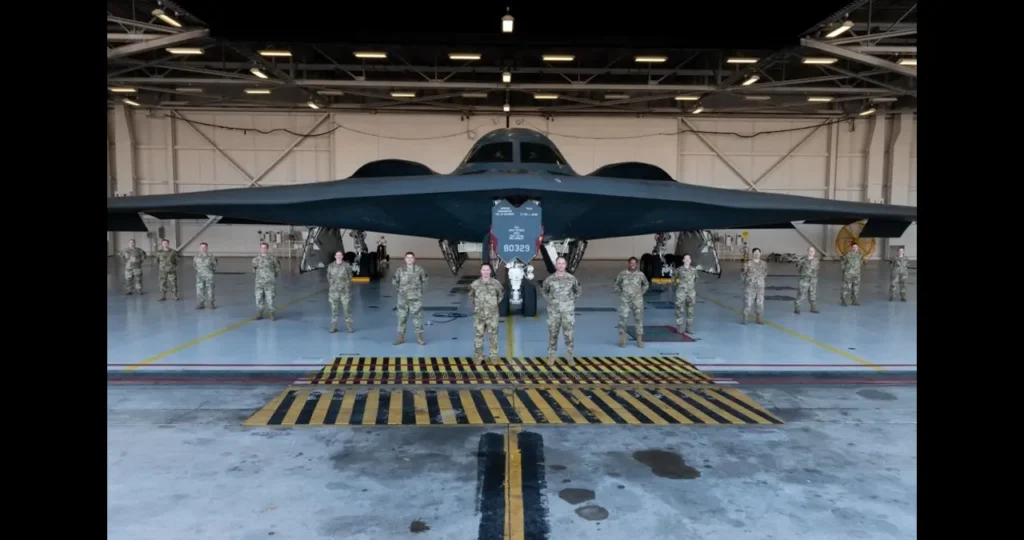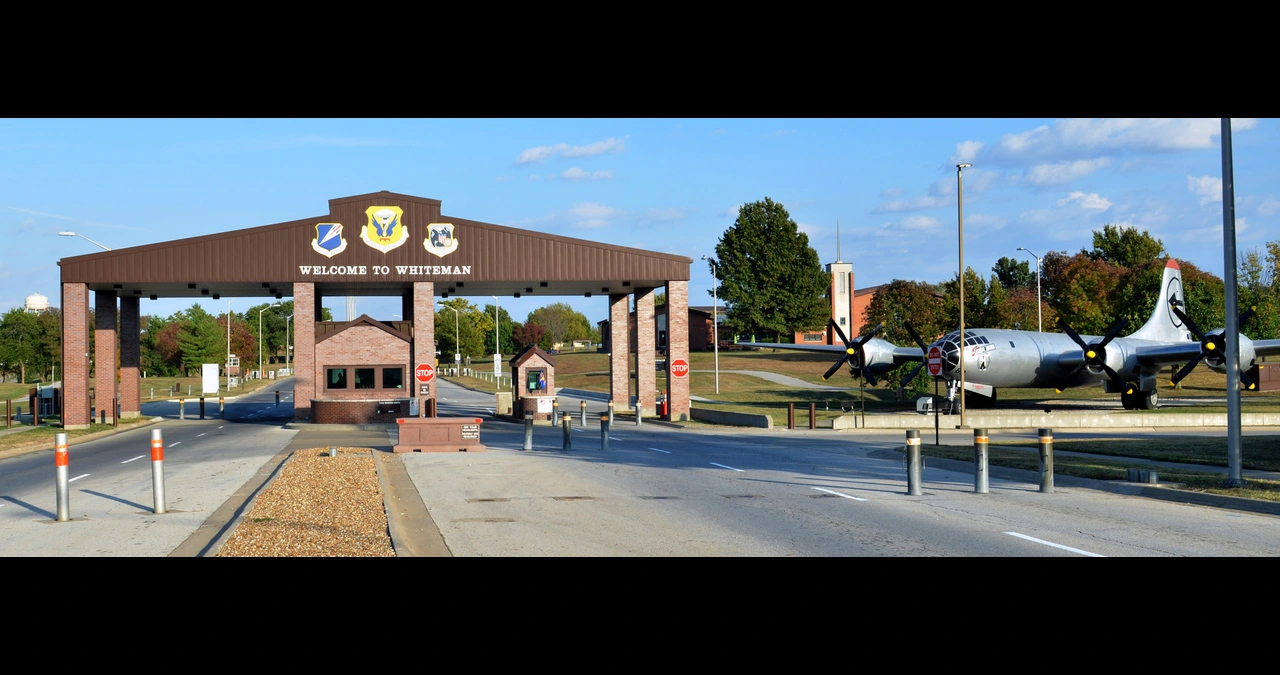Whiteman Air Force Base as a beacon of America’s military might, nestled comfortably in Missouri’s rolling Heartland. Far more than just runways and hangars, Whiteman represents a deep tapestry of history, cutting-edge technology, community integration, and global influence. From its origins as a glider training facility to housing the stealthiest bombers ever built, the base weaves a remarkable story of adaptation, resilience, and strategic importance. Whether you are curious about historical legacy, environmental stewardship, or what life looks like on base, this long-form article offers an expert’s take—casual in tone, refined in content, and polished to be free of mistakes.
Origins: A Glider Base-Turned Global Powerhouse
Whiteman Air Force Base began life under the name Sedalia Glider Base during the World War II years of American mobilization. Established in the early forties, it was home to WACO CG‑four gliders and troop-carrier aircraft like the C‑fourty‑six and C‑forty‑seven. Pilots and paratroopers learned to navigate windy windows, clandestine missions, and night drop tactics that would serve them in the European theaters. Situated on terrain locally known as the Blue Flats, this site became a hive of wartime training energy
In the post-war days, operations slowed until light faded from the base’s corridors. But in nineteen fifty‑one, the United States Air Force’s Strategic Air Command revived the installation—then renamed Sedalia Air Force Base—to host the 340th Bombardment Wing. With B‑forty‑seven Stratojets and KC‑ninety‑seven tankers arriving in the early fifties, the air base reawakened with strategic mission purpose
Its final renaming came in December of nineteen fifty‑five, when the base became Whiteman Air Force Base—honoring Second Lieutenant George A. Whiteman, one of the first casualties in the Pearl Harbor attack. He flew his P‑forty that morning in a courageous, though tragic, attempt to defend Bellows Field—earning a namesake fitting for a community defined by sacrifice
The Missile Era: Underground Power and Tension
In the early sixties, Whiteman AFB transitioned from bomber operations to missile defense. The Strategic Air Command activated the 351st Strategic Missile Wing, installing hundreds of Minuteman I intercontinental ballistic missiles in underground silos across its grounds. This astonishing construction—excavating nearly a million cubic yards of earth and pouring vast quantities of concrete and steel—was a structural testament to Cold War investment in deterrence
Soon upgraded to Minuteman II missiles, the base doubled down on readiness until nineteen ninety‑one, when global disarmament agreements reshaped nuclear posture. The final Minuteman II silo was imploded by nineteen ninety‑seven, ending nearly thirty-six years of missile-based strategic presence Today, one former launch facility remains preserved for historical visits, complete with era‑appropriate displays and interpretive context for guests.
The B‑Two Era: Under the Radar and Over the Horizon
In the late eighties, geopolitical shifts and strategic arms talks created new mission possibilities. Congressional champion Ike Skelton secured Whiteman AFB as home to the B‑Two Advanced Technology Bomber, later designated the Spirit—a jet aerodynamic marvel with stealth ability. With the 509th Bomb Wing relocated from New Hampshire and the first B‑Two arriving in nineteen ninety‑three, Whiteman took on global attention as the world’s only operational stealth bomber base
Today nineteen B‑Two aircraft call Whiteman home. These jets serve as national deterrent and global strike assets, capable of precision conventional or nuclear strikes anywhere in the world. Their missions range from Kosovo support to the War on Terror—highlighting the base’s relevance in high-stakes strategic operations.
Units at Whiteman: A Collaborative Defense Ecosystem
Whiteman AFB hosts a tapestry of units that, together, support and expand its mission:
- The 509th Bomb Wing (Active Duty): The base’s primary unit, responsible for operating B‑Two Spirits and strategic global strike capabilities. Its lineage traces back to the atomic bombing B‑Twenty-nines from WWII
- Missouri Air National Guard’s 131st Bomb Wing: An associate unit that also flies B‑Twos, making it the only Air National Guard wing capable of nuclear mission support
- 13th Bomb Squadron: One of the Air Force’s oldest squadrons, this unit brings historical heft with lineage dating to WWI and operates stealth jets under the 509th umbrella.
- 442nd Fighter Wing (AF Reserve): Stationed with A‑Ten Thunderbolt IIs, it provides close air support training and operational synergy alongside B‑Two readiness
Together, these units form an integrated defense environment—training, flying, maintaining diverse aircraft, and combining personnel across active duty, guard, and reserve. The partnerships exemplify Whiteman’s strategic depth and flexibility
Mission Objectives: Anywhere, Anytime—Global Strike Enabled
Whiteman’s mission centers on a triad:
- Strategic deterrence via B‑Two stealth capabilities
- Conventional and precision global strike
- Combat support for allied or joint operations
The 509th embarks daily on readiness Whiteman Air Force Base, maintaining alert status and refining global deployment tactics Their training protocols, Birddog interoperability, and response systems uphold a promise: execute global missions from heart to horizon—wherever called.

Community and Lifestyle: Beyond the Airfield
The base community is remarkably integrated with surrounding towns. The Whiteman Base Community Council bridges relationships among Knob Noster, Warrensburg, Sedalia, and the base—organizing air shows, family events, and supportive programs that anchor Airmen to the Heartland they serve
A robust support ecosystem is in place: youth programs, daycare centers, commissary, medical services, educational partnerships, and housing units that mix families, active-duty members, and civilian employees coherently. The base population, approaching eight thousand including dependents and civilian staff, epitomizes a small city dedicated to defense and daily life.
Environmental Stewardship: Stewarding the Land
Like many long-serving military posts, Whiteman has soil and groundwater contamination from fuel, solvents, and firefighting foam. Missouri’s Department of Natural Resources works closely with the Air Force through remediation programs. Monitoring continues across eight designated sites to ensure human and environmental safety—demonstrating active engagement in responsible land management
Technical Edge: Facilities That Defy Boundaries
Whiteman maintains various operational zones:
- Stealth hangars designed to house and maintain B‑Twos, ensuring radar signature protection
- Missile-era facilities are now repurposed or preserved for heritage display
- A‑Ten hangars and support zones for the 442nd
- Shared infrastructure for fuel, runway systems, navigation facilities, and rapid deployment grid systems
Maintenance, repair, and upgrade programs keep the base at advanced readiness—positioning it for next-generation missions with systems like the B‑21 Raider already in planning
Milestones that Shape Whiteman
From mid‑twentieth‑century milestones like its founding, missile-role shift, and Pearl Harbor namesake, to modern benchmarks including B‑Two deployment, global missions, emergency landings, and future B‑Twenty-one base selection, Whiteman’s adaptability is its hallmark.
FAQs
What aircraft does Whiteman host?
Conventional warplanes include B‑Two Spirits, A‑Ten Thunderbolts, and T‑Thirty-Eights. Future missions include the B‑Twenty-one Raider.
Why is Whiteman strategically positioned?
Located centrally in the U.S., it provides rapid access to both coasts and global staging capabilities.
Is Whiteman environmentally safe?
Long-term cleanup projects monitor contamination carefully, ensuring public and ecological safety
Can the public visit?
Parts like former missile silos can be toured by military personnel; civilian visits are limited and managed case-by-case attachments with public affairs.
What plans exist?
Whiteman has been selected to host B‑Twenty‑one stealth bombers along with Ellsworth and Dyess bases.
Quick Fact Table
| Feature | Details |
| Establishment | August of nineteen forty‑two as Sedalia Glider Base; WWII glider and troop‑carrier training |
| Namesake Second Lieutenant George | A. Whiteman, Pearl Harbor aviator deceased nineteen forty‑one |
| Missile Era | 351st Strategic Missile Wing operated Minuteman I & II from the early sixties to ninety‑seven. |
| Bombing Era | B‑Two Spirits since nineteen ninety‑three under 509th Bomb Wing |
| Supporting Units | 131st Bomb Wing (ANG), 13th Bomb Squadron, 442nd Fighter Wing (AF Reserve) |
| Key Missions | Strategic deterrence, global precision strikes, combined readiness support |
| Community Links | BCC, local events, family programs, education partnerships |
| Environmental Efforts | Remediation of petroleum, solvents, PFOS, unexploded ordnance sites |
| Future Plans | Expansion for B‑Twenty‑one Raider Operations |
Expert Takeaway
Whiteman Air Force Base embodies the story of American airpower—evolving from glider training grounds to missile strongholds, then into the pioneering realm of stealth bomber operations. With future readiness front of mind, environmental progress underfoot, and a vibrant community of servicemembers and families, Whiteman’s role in national defense continues to expand. Casual observers and aviation enthusiasts will both appreciate its layered legacy, ongoing innovation, and quiet dedication to global security.



